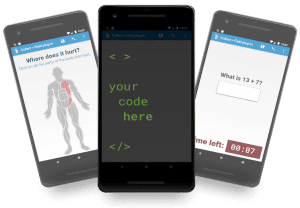How to plan your community health assessment
Planning a community health assessment (CHA) is both a technical and human-centered endeavor. These assessments help hospitals, nonprofits, and global health organizations understand the health status, needs, and risk factors of a specific population, especially in underserved or resource-limited areas.
Done well, CHAs form the foundation for long-term strategies like Community Health Improvement Plans (CHIPs), guiding more equitable policies, programs, and funding.
Defined by the CDC as a systemic and comprehensive, data-driven process to identify key health issues, CHAs and their close counterpart, Community Health Needs Assessments (CHNAs), play a vital role in both the U.S. and global public health systems. While terminology and mandates may vary by country or organization, the goal is the same: to gather actionable data that improves health outcomes.
This article focuses exclusively on quantitative approaches to CHAs, such as structured surveys and digital forms. While qualitative methods like interviews and focus groups can add valuable context, they fall outside the scope of this guide. Our aim is to help you plan a high-quality, secure assessment using standardized data collection methods.
To help create this piece, we spoke with Catherine Kendall, SurveyCTO’s Enterprise Solutions Advisor. Catherine has over 10 years of experience in the healthcare industry including patient services, patient relations, management and operations, and healthcare innovation. Prior to joining Dobility, she was a founding member of an innovation program at Mayo Clinic. There, she connected startup founders from around the world with medical subject matter experts to further advance innovative technologies and solutions.
Plan a community health assessment (CHA) with these 7 steps
Any successful CHA depends on a clear, phased approach. While community health assessment frameworks may vary across organizations and regions, most follow a common sequence of steps.
1. Set goals and define scope
Start with a clear purpose. What do you want to learn? Are you identifying service gaps, preparing for a funding proposal, or launching a broader Community Health Improvement Plan (CHIP)? Your goals will shape every decision, from population targeting to data collection design.
2. Identify your target community
Define the population you’re assessing—by geography, demographics, and other key characteristics, like age or gender. Part of this work also requires knowing what barriers your sample may face in areas of language, transportation, health literacy, etc.
3. Choose your data collection method
Quantitative CHAs often rely on structured surveys collected via in-person interviews, mobile devices, or web forms. Alongside your method, consider the tools you will need to gather your data.
This is particularly important if you will be collecting data in person and working in low-connectivity settings. In such scenarios, tools like SurveyCTO that support offline data collection can help ensure data reliability, reach, and project speed.
4. Design inclusive, effective instruments
Create questionnaires that use plain language, avoid medical jargon, and reflect local norms. Literal translation isn’t enough—respondents need to understand both everyday and health-specific terms.
Work with trained translators if necessary. Even if there is no language barrier, it’s essential to include local partners who can ensure that questions are both culturally appropriate and medically clear.
5. Collect data ethically and securely
Hire data collectors—ideally, trusted local partners or community health workers (CHWs)—who already have rapport within the community.
If you’re hiring locally and the person is not a CHW, provide training not just in data collection best practices, but also in the basic medical knowledge needed to understand and explain the survey content. That way, they’re equipped to conduct respectful, accurate interviews and address participant questions with confidence.
"Local organizations such as churches and nonprofits are often the most familiar with challenges of the community. Building intentional relationships and trust with community leaders can help you gain an advocate within the community to conduct the assessments."
- Catherine Kendall, Enterprise Solutions Advisor, SurveyCTO
6. Recognize and support community health workers
Community health workers are essential to data collection, yet their contributions are often undervalued. Fair pay, ongoing training, and recognition—through leadership roles or co-authorship—aren’t just ethical, they’re practical: supported CHWs are more likely to gather accurate, complete data.
If you work with CHWs as part of your community health assessment, treat them as the professionals they are. This is not only ethical, it will also help ensure that your assessment is sustainable, community-informed, and grounded in trust.
Tip
To see how SurveyCTO supports community health workers in the field, explore this Community Health Workers template.
7. Analyze, evaluate, and share
Once collection is complete, clean and validate the data, then analyze it for insights. Translate findings into actionable recommendations.
In the U.S., CHAs are often conducted specifically to support the development of Community Health Improvement Plans (CHIPs). These long-term strategic plans guide public health investments, partnerships, and programming over several years.
An effective CHIP depends on having accurate, complete, and representative data from the CHA. Without that strong foundation, it’s difficult to prioritize efforts or measure real progress over time.
Three best practices to ensure data quality and security in community health assessments
When it comes to community health assessments, collecting data is only part of the equation. To make informed decisions and build trust with the communities you serve, you must also ensure that data is accurate, secure, and ethically gathered. In health contexts, where the stakes include individual privacy and public trust, these concerns are especially critical.
Here are three best practices for protecting sensitive data and maintaining high data quality from the field to final analysis:
- Use encryption to protect data during collection and in storage
- Build high-quality, secure data from the start
- Design surveys with sensitivity and respect
Best practice #1: Use encryption to protect data during collection and in storage
Health data is among the most personal information people can share. Whether you’re asking about chronic illness, reproductive health, or vaccination status, it’s vital to demonstrate that respondents’ information is handled with care.
Key best practices for protecting data include:
- Using encryption and secure servers: All data—both in transit and at rest—should be encrypted to prevent unauthorized access.
- Limiting access through user roles: Assign role-based permissions so that field staff, data analysts, and project managers can only access the data they need.
- Obtaining informed consent: Always explain why the data is being collected, how it will be used, and how privacy will be protected. This builds trust and improves participation rates.
- Enabling remote wipe or device-level security: In case a mobile device is lost or stolen, ensure there’s a protocol in place to protect data integrity.
Transparency isn’t just about ethics; it’s also about increasing response rates and data reliability.
"You’ve got to be very explicit and very clear to the participants how their data is going to be used and really provide them with high levels of assurance that it’s discrete, that it’s private, that it’s indiscriminatory."
- Catherine Kendall, Enterprise Solutions Advisor, SurveyCTO
Best practice #2: Build high-quality, secure data from the start
Even the most secure data is useless if it’s inaccurate or biased. And accurate and complete health data is extremely sensitive and requires the best-possible data security! Ensuring data quality and security starts at the planning stage and continues through daily fieldwork.
Key best practices to improve data quality and security include:
- Regular spot-checks and audits: Use tools like SurveyCTO’s audio or text audit features to review interactions between enumerators and respondents. This helps identify leading questions, incomplete surveys, or unintentional bias.
- Timestamps and GPS metadata: Verify that surveys were conducted at the correct times and locations, and ensure field protocols are followed.
- Standardizing training and onboarding: Make sure enumerators know how to use the tools, ask questions consistently, and handle challenging scenarios.
- Using skip logic and constraints: Prevent errors at the point of entry by validating responses in real time. For example, require that numeric fields fall within plausible health-related ranges.
- Monitoring field performance: Dashboards and case management tools can help you spot outliers, gaps, or delays in data collection.
- Including end-to-end encryption to protect people, data, and offer peace of mind to respondents to increase participation
- Implementing role-based access control so that only staff who absolutely need to see data can access it
These quality controls not only ensure the integrity of your CHA but also build your organization’s credibility with stakeholders, partners, and the community.
Best practice #3: Design surveys with sensitivity and respect
Finally, how you ask questions matters as much as what you ask. Health topics can be emotionally charged, culturally sensitive, or legally complex. To encourage honest and accurate responses, your data collection instruments must be designed with empathy.
Key best practices for survey design include:
- Using neutral, non-judgmental language
- Offering response options that reflect real-life variability
- Being transparent about data use
- Letting respondents skip questions if needed
For example:
Instead of asking:
“Did you take all three of the booster vaccines as recommended by the Ministry of Health?” Try: “How many booster vaccines have you received?” with options ranging from 0 to 3. This reduces pressure to conform and increases response accuracy.
SurveyCTO supports this kind of thoughtful design with tools for custom skip logic, multilingual forms, and preloaded rosters—all of which contribute to more respectful, accurate, and complete data.
Tip
Listen to this conversation in full on the Survey & Beyond podcast to hear firsthand how CHWs are shaping the future of global health.
Build smarter, safer community health assessments
Planning a community health assessment can feel overwhelming, especially if you’re working in a low-resource or underserved community. But with the right structure, tools, and approach, it’s possible to gather the high-quality data you need to improve health outcomes and allocate resources where they matter most.
For example, in Uganda, Nyaka used SurveyCTO to build an electronic medical records (EMR) system that transformed their paper-based clinics into streamlined, data-driven operations. With mobile data collection tools and real-time dashboards, they reduced multi-week reporting processes down to minutes, freeing up community health workers to focus more on patient care.
From setting clear goals and identifying your target population to designing ethical surveys and protecting sensitive data, every step in the CHA process contributes to your impact.
Whether you’re launching your first community health assessment or fulfilling a community health needs assessment requirement, taking a thoughtful, technology-supported approach helps you build trust, improve accuracy, and ultimately deliver better care.
About to start a community health assessment?
Contact us today to see how SurveyCTO can strengthen data collection for your next community health assessment.




